Introduction
Retention is one of the most critical factors influencing a SaaS company’s growth and profitability. Simply put, user retention refers to keeping customers coming back to use a product or service over time. In the context of software or apps, it means how many people continue to use the app after their initial interaction. A slight improvement in retention can have a compound effect, leading to exponential revenue growth over time.
What is Retention?
Retention is about keeping customers engaged and ensuring they continue to find value in your product. For digital products, retention is often measured by how many users return to the app after their first visit. It’s a reflection of the perceived value and satisfaction users get from the product.
Classic retention is typically calculated using the following formula:
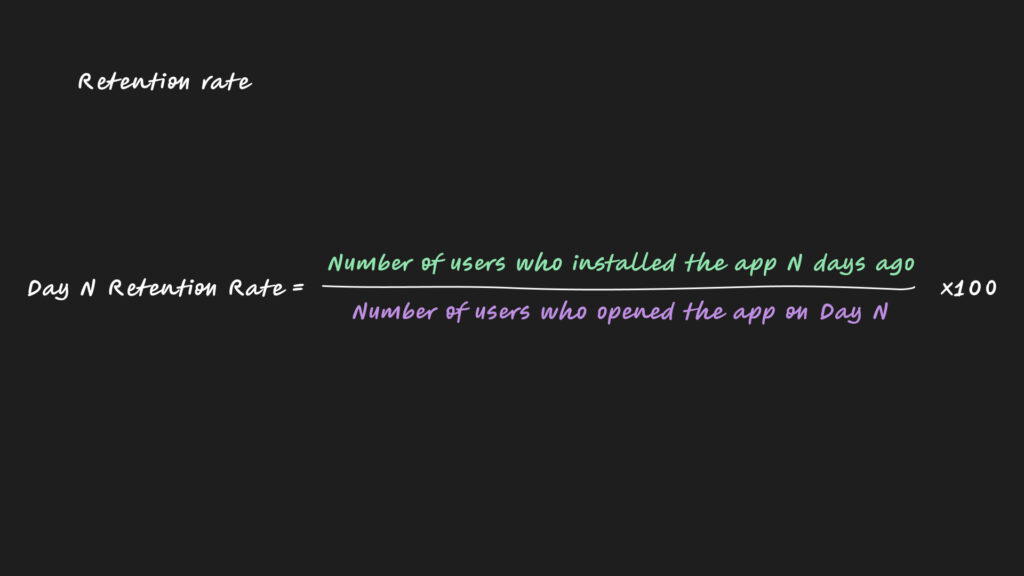
For example, if 100 users signed up on Day 0, and 25 of those users returned on Day 1, the Day 1 retention rate would be:
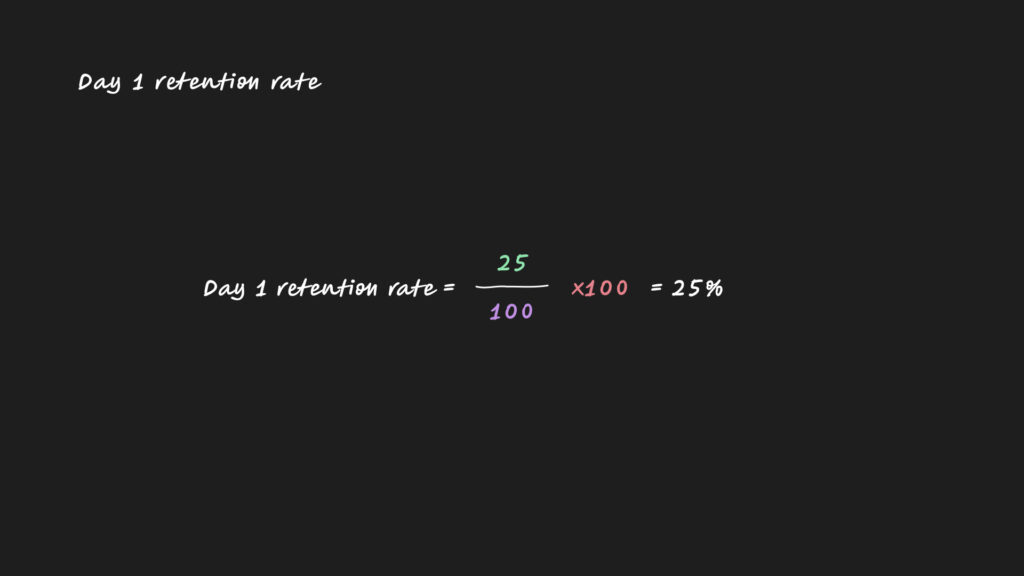
This means that 25% of the users who signed up returned to use the app the next day. Each day’s retention rate can be calculated independently, allowing businesses to track ongoing engagement.
Visualizing Retention Curves
If we put retention on a chart, we can see that the most common behavior is to lose users continuously until the number stabilizes at a given percentage. For a SaaS company with a monthly subscription, it’s crucial to examine month-to-month retention after signup. This can be visualized effectively with a chart that represents retention rates over several months.
Retention Chart Example:
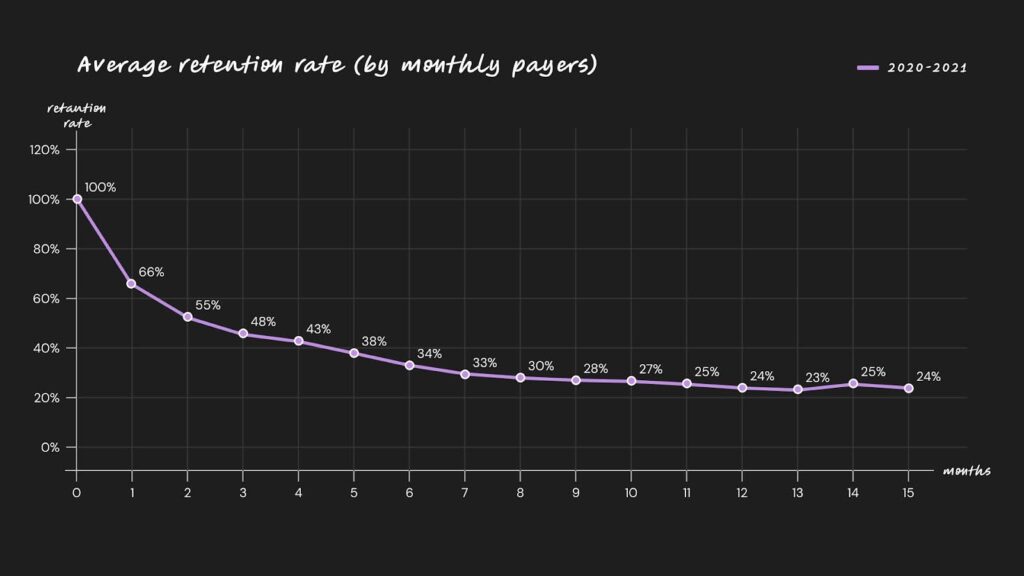
By plotting the percentage of users who maintain their subscriptions over time, we can identify 2 typical retention curves:
- Declining Curve
- Flattening Curve
Declining Curves
A declining retention curve suggests that the product has not yet achieved proper product-market fit. The continuous decline indicates that users are not finding sufficient value to maintain their subscription. The rate of decay will highlight the severity of the issue:
- Rapid Decline: Indicates a significant problem that needs urgent attention to identify and deliver a compelling value proposition.
- Gradual Decline: While less severe, it still suggests the need for product improvements to stabilize and eventually increase retention.
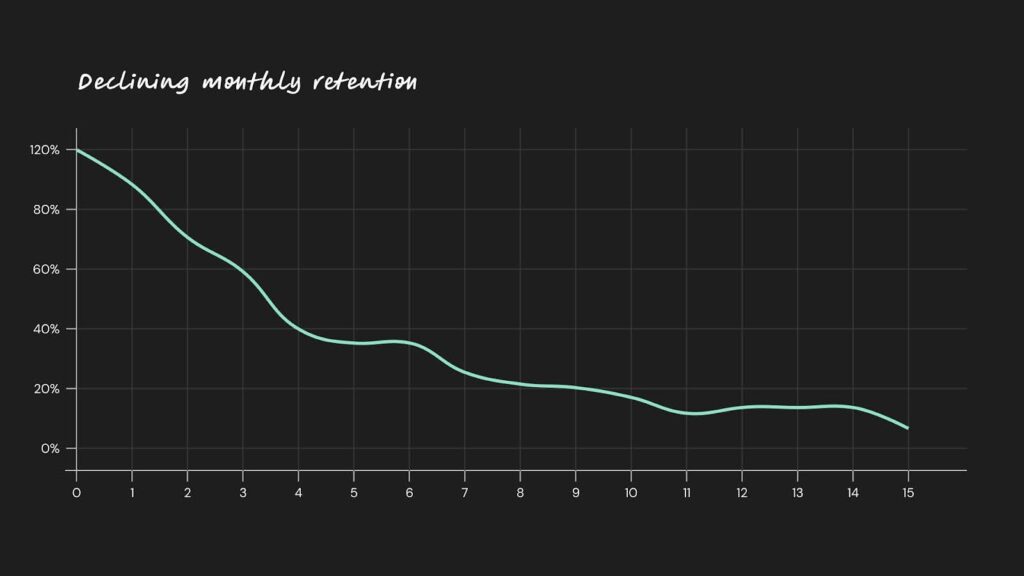
Flattening Curves
A flattening curve indicates that a percentage of users have found value in the product and continue to return, maintaining their subscription. Not all flattening curves are equal. The level at which the curve flattens is critical:
- Higher Flattening Level: Indicates higher long-term retention and a healthier product. This suggests that a substantial portion of users find ongoing value in the product.
- Lower Flattening Level: May still show some retention, but at a lower percentage, indicating that fewer users continue to see value over time.
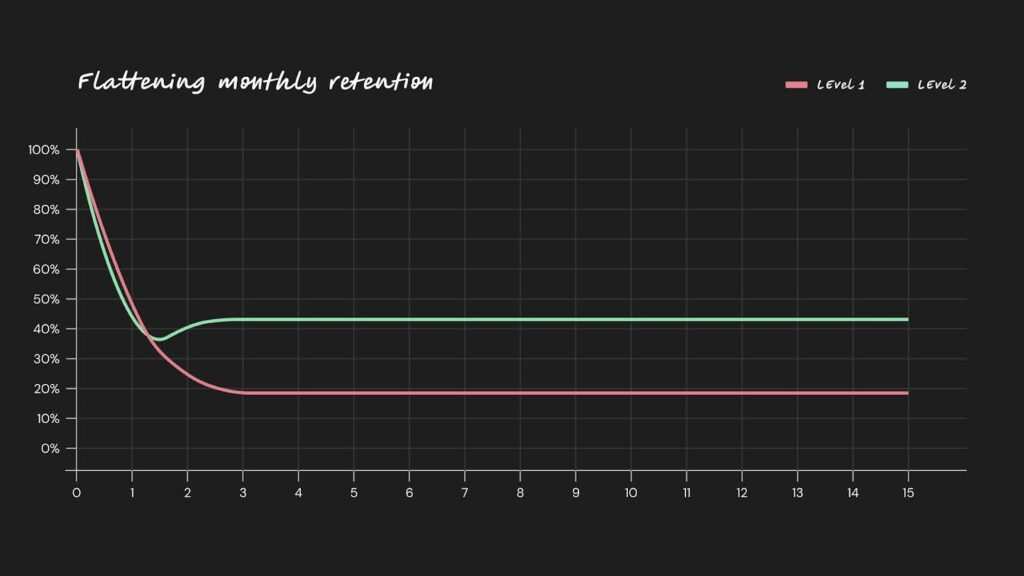
The Compound Effect of Retention
As we saw with the flattening curve, the level at which the curve flattens is critical. Increasing this percentage has a dramatic impact on business performance. Here is an example:
Imagine a SaaS company with 10,000 customers, each paying $100 per month, resulting in a monthly recurring revenue (MRR) of $1,000,000. Currently, the company retains 45% of its customers each month, losing 55% or 5,500 customers.
Let’s say we manage to increase retention by 1%. A combination of product improvements, a great onboarding flow, and enhanced customer satisfaction finally pays off. See how this can lead to substantial revenue gains over time. If the retention rate improves by just 1%, from 45% to 46%, the company would lose only 5,400 customers per month instead of 5,500.
Here’s the impact over one year:
- 45% Retention: The company would have 220 customers left, generating $22,000 MRR.
- 46% Retention: The company would have 270 customers left, generating $27,000 MRR.
This 1% improvement in retention leads to an additional $5,000 in MRR or $60,000 annually—a significant increase in revenue from a small change in retention. This example illustrates how even a slight improvement in retention can substantially boost revenue, especially with a larger customer base.
Moving the needle
Improving retention is challenging. It is considered a lagging indicator, reflecting past influences on customer loyalty and satisfaction. Any efforts to boost retention need future measurement, though certain leading metrics can indicate whether improvements are on track.
SaaS companies must address several critical areas:
- Evolving Expectations: Rapidly adapting to changing customer expectations is crucial to prevent dissatisfaction and churn.
- Real-Time Data Shortage: Access to real-time data on user engagement and performance is essential for timely retention strategies and understanding the causes of churn.
- Intense Competition: The competitive SaaS market requires companies to retain customers by offering superior pricing or features compared to competitors.
- Weak Value Proposition: Clearly defined and distinct value in products is necessary to prevent customers from switching to more appealing competitors.
- Customer Experience Failures: Providing consistent, excellent customer support is vital; any failures can result in immediate churn.
- Customer-Centricity Lapse: Integrating customer needs and preferences across all business operations is key to creating personalized experiences that enhance loyalty.
Conclusion
Investing in user retention is crucial for the sustained growth of a SaaS company. By understanding and improving retention rates, businesses can significantly enhance their revenue over time. The compound effect of even small changes in retention underscores the importance of focusing on user satisfaction and engagement.
